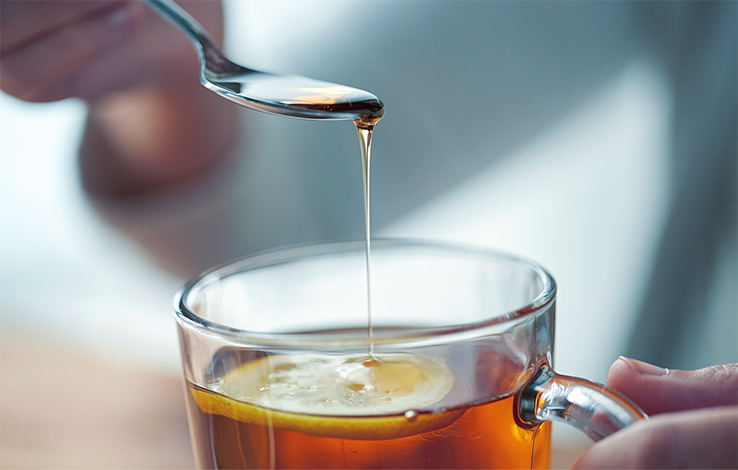The symptoms are generally the same every season, although the severity can vary. These symptoms can be easily managed with natural remedies – detailed below.
What’s the difference between flu epidemics & pandemics?
Most countries monitor flu season closely, and regularly issue flu reports, warnings and advice to the public. This is because although most cases of the flu are controllable, the more severe flu pandemics – which are far rarer – present a global problem. As a result, health organisations try to anticipate them before they happen.
Influenza pandemics typically occur around three times per century. Examples include the Spanish Flu Pandemic of 1918, and more recently, the Swine Flu Pandemic of 2009. They spread when a new strain of the virus is transmitted to humans from other animal species. In these instances, flu symptoms can be extremely contagious, cause severe disease, or even death.

How flu seasons are MONITORED across the world
Many countries issue national reports on the flu season at regular intervals. The UK, for example, publishes a detailed weekly paper on the number of flu symptoms reported in medical practices. Each country sets its own criteria on what it considers to be an epidemic based on how often flu symptoms are reported per 100,000 patients.
To illustrate with an example, the 2018/2019 flu season got off to a slow start across Europe, but the circulation of viruses, especially influenza type A, heightened rapidly in early 2019. The unusual weather patterns experienced across Europe are stated as a key factor in the swathe of different flu strains that took many by surprise.
In general, flu severity in this period appeared similar to previous years that have seen co-circulating influenza A virus. Initial studies suggest that older age groups have been at particular risk, especially those who live in communal care homes. This shows that it’s especially important to maintain defences in senior years.
The basics of flu
Flu viruses are easily transmitted from one person to another. They spread mainly via droplets in the air when people cough and sneeze. You can also catch flu through contact with an infected person’s viral secretions, such as when you shake hands with someone who has the flu.
Common symptoms include high temperature or fever, headache, muscle pain, runny nose, blocked nose, sore throat, cough and a general feeling of ill health. Sufferers can show all or just some of these symptoms. The more serious symptoms typically last for only a few days, but a cough, sore throat and runny nose may persist. Usually, influenza makes people feel quite unwell, and it may take a week or so to fully recover.
Once you have been infected with a particular influenza virus, you usually become immune to it upon recovery. However, because the virus circulating changes from year to year, immunity tends to last only for one season. That is why people who are recommended to be immunised need to receive their injection every autumn. The distribution of viruses can change over the course of a winter, and the current distribution may not remain the same.
Who is at risk from flu?
During the winter months, influenza may infect up to 20% of the population, depending on which viruses are circulating. People at increased risk of severe disease once infected include the elderly, pregnant women, young children, immune-compromised people and people with chronic underlying medical conditions.
Natural ways to manage flu symptoms
As it is not possible to predict if one influenza virus will become prevalent in a particular season or what the future holds, it’s worth getting familiar with natural remedies that can help you manage your symptoms if you do get flu. Of course, eating well, staying hydrated and getting lots of rest is key, but the following natural remedies will also add an extra layer to your flu treatment plan:
Honey and lemon
Not only great for warming comfort and a vital boost of Vitamin C, the age-old natural remedy of honey and lemon juice and hot water works a treat to relieve sore throat symptoms. Honey is naturally antibacterial and promotes healing. It coats the throat, soothing irritated tissues, and therefore is a time-honoured cough suppressant.
Peppermint tea
Peppermint contains menthol, which helps thin mucus and calm sore throats. For a break from honey and lemon, give a cup of hot peppermint tea a try. Peppermint also has anti-inflammatory, antibacterial, and antiviral properties, which may encourage healing.
Gargle with salt water
It might everyone’s least favourite flu treatment, but gargling with salt water is an effective natural remedy – so much so that it is often recommended by doctors. Simply dissolve salt in warm water and gargle to kill bacteria in the throat and break down unpleasant secretions. If you’re in the height of the flu, try to do this every three hours or so.
Natural nasal spray
Nasal irrigation is a great method to quickly clear and soothe a blocked nose – and is a far more pleasant experience than gargling salt water too. A nasal spray is the perfect product to help, but not all are created equal. Some nasal sprays on the market contain harsh chemicals that come damage the nasal membrane. PHYSIOMER®, however, is a 100% natural nasal spray, made from pure seawater from Saint Malo Bay in France. Our range of clinically proven products cleanse, moisturise and clear the nasal passage naturally, so they’re perfect for the whole family.
View the full range of PHYSIOMER® products to find the best solution for you.



